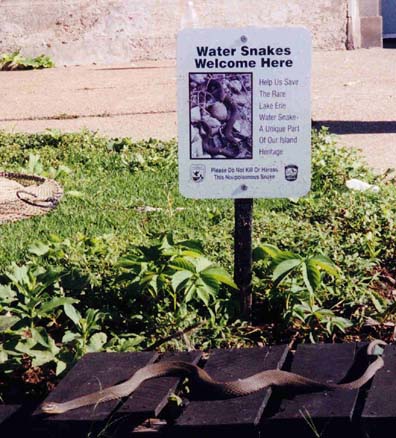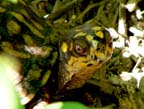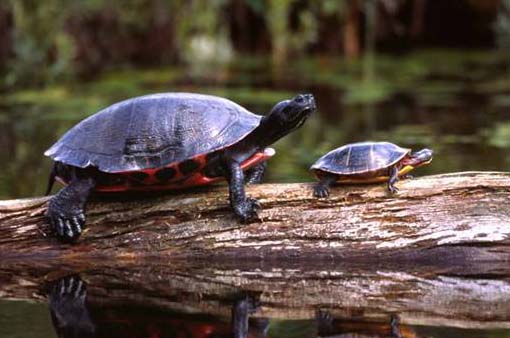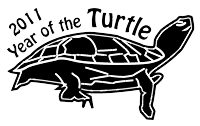
st1:*{behavior:url(#ieooui) }
/* Style Definitions */
table.MsoNormalTable
{mso-style-name:”Table Normal”;
mso-tstyle-rowband-size:0;
mso-tstyle-colband-size:0;
mso-style-noshow:yes;
mso-style-parent:””;
mso-padding-alt:0in 5.4pt 0in 5.4pt;
mso-para-margin:0in;
mso-para-margin-bottom:.0001pt;
mso-pagination:widow-orphan;
font-size:10.0pt;
font-family:”Times New Roman”;
mso-ansi-language:#0400;
mso-fareast-language:#0400;
mso-bidi-language:#0400;}
At the Massachusetts Division of Fisheries and Wildlife, outreach coordinator Marion Larson was tipped off to Partners in Amphibian and Reptile Conservation’s (PARC) Year of the Turtle by state turtle biologist Lori Erb, who is an active PARC member.
Larson thought the timing was excellent for a Year of the Turtle. The previous year, the state had teamed with the University of Massachusetts in a program to identify and monitor highway crossing sites that were difficult for turtles. The biologists wanted to provide more training, and to round up more volunteers.
In fact, says Larson, the state turtle biologists had plenty of fantastic information on the state’s turtles, and lots of already-scheduled events featuring turtles. The Year of the Turtle was a vehicle, Larson says, “for taking all the disparate pieces and putting them together into something bigger and more over-arching.”
In Connecticut, the Year of the Turtle also provided inspiration and a deadline for outreach biologist Kathy Herz. “I think it has been a really great effort for us. It’s nice to focus on a small animal that is often overlooked in favor of bigger animals like turkey and deer,” Herz says.
In Connecticut, the Year of the Turtle has meant a monthly press release on a different aspect of turtle conservation, a Year of the Turtle Web site, fact sheets on 12 Connecticut turtle species (including sea turtles), an children’s art contest, and an events calendar.
Both Herz and Larson say that the Year of the Turtle has been a success, with plenty of media interest, and other benefits as well. In Massachusetts, for example, 100 additional volunteers signed up for the turtle road-crossing monitoring project.
Herz is sold on the idea of turning the spotlight on an under-appreciated species or group of species. It focuses the public’s and the media’s attention on overlooked conservation issues, and inspires her to check projects off her to-do list that might otherwise be overwhelmed by more urgent issues or more popular creatures. She says, “I’m hoping we will do another species next year.”
Tomorrow, in honor of the year of the turtle, we’ll take a look at several turtle research projects.
Photo: Red-bellied cooter and painted turtle. The red-bellied cooter (the larger turtle in the picture) is the focus of an annual event in Massachusetts that was included in the state’s Year of the Turtle festivities. Photo courtesy of US Fish and Wildlife Service.
 The Lake Erie watersnake is the 23rd species to be delisted from the Endangered Species Act due to its recovery. Not as glamorous as the bald eagle or American alligator, the Lake Erie watersnake is a harmless snake species found on offshore islands in western Lake Erie.
The Lake Erie watersnake is the 23rd species to be delisted from the Endangered Species Act due to its recovery. Not as glamorous as the bald eagle or American alligator, the Lake Erie watersnake is a harmless snake species found on offshore islands in western Lake Erie.



